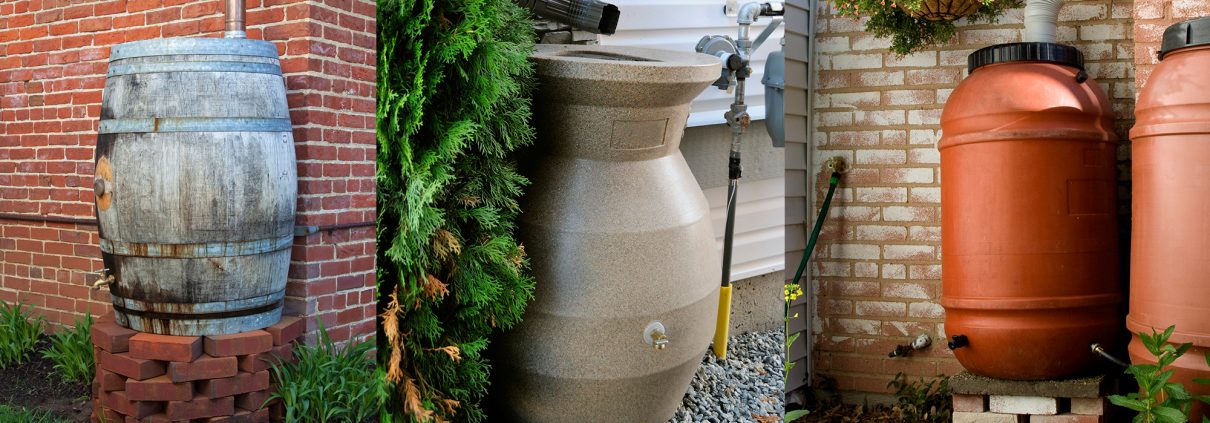Harvest and Conserve with Rain Barrels
Rain falls on the roof of your house, runs through the gutters and downspouts and into the yard – gushing over the grass into the same area each time and soaking into the ground or making its way to the storm sewers. Gutter systems are good for keeping destructive water away from buildings, but letting the water go is a waste of perfectly good water. That’s why many people and companies choose to harvest and conserve rainwater using different styles and types of rain barrels.
Capturing and reusing water offers several benefits, including saving on utility bills, boosting the health of your lawn with chemical-free water, avoiding watering restrictions and helping the environment. Collecting rain in barrels helps slow runoff and encourages rain to soak into the soil more efficiently, which is important to recharging groundwater supplies and protecting sensitive ecosystems. Using a rain barrel also reduces demand from community water supplies and helps avoid the consequences of overusing local water sources.
How much difference could one barrel make?
Well, the answer may surprise you. You might not think you can collect enough water to make a difference. However, you will be surprised how fast rainwater adds up if you are collecting it from the roof. Just a half inch of rain falling on a 1,000-square-foot roof yields 300+ gallons of water, and that’s only during one rainfall. Lets’ say annual rainfall in your area is 10 to 12 inches. That’s 6,000 to 7,200 gallons of water in a year -probably more than you need. However, you don’t have to catch every drop of rain to reap the benefits.
Here are a couple of additional ways to look at it:
- A typical rainfall will easily fill a 55-gallon barrel in a short amount of time.
- A modest-sized house with a typical two-foot overhang will collect about 408 gallons of water during a half-inch rain.
- During a one-inch rainfall, you can collect about a half gallon of water per square foot of roof.
So how much can you expect to collect?
It’s easy to calculate your own rainfall potential. First, estimate the square footage of your roof. Divide that number by two. That’s how many gallons your roof will collect during a one-inch rainfall.
As you can see, it won’t take long to fill up your new rain barrel. If you want to collect as much rainwater as possible, consider connecting several barrels together at each downspout. Don’t forget to raise the barrels off the ground to make the faucet easier to access, and make a plan for overflow so you won’t compromise the foundation of your home or building. In most cases, gravity will pull the water through the spigot and into a hose. You also can dip a watering can into the barrel or get a pump. A soaker hose is an excellent solution to avoid wasting water. Just hook one up to your rain barrel and even overflow water won’t go to waste.
Once you’ve got your rain barrel or barrels in place, friends, family and neighbors will be curious, and you’ll inspire them to consider rainwater conservation, too, which further extends the impact of your own efforts. Any way you look at it, harvesting rainwater helps you, your community and your world.



Leave a Reply
Want to join the discussion?Feel free to contribute!